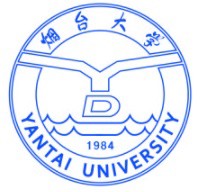Defective SiC nanotube based single-atom catalysts for electrocatalytic nitrogen fixation with curvature effect
Zhiwei Wang a, Shuaishuai Gao a, Xiaojing Liu a, Xin Chen b, Xintao Zhang a, Rongjian Sa c, Qiaohong Li d, Chenghua Sun e, Zuju Ma a
链接:https://doi.org/10.1016/j.mcat.2023.113519
Abstract
The production of fertilizers, explosives, and various other chemicals relies heavily on ammonia (NH3). Electrochemical reduction of nitrogen to ammonia, also known as the nitrogen reduction reaction (NRR), is a potential alternative to the Haber-Bosch process that can be carried out at ambient conditions. However, many NRR catalysts suffer from low selectivity and require a large overpotential to drive the reaction, limiting their practical application. In this study, we used density functional theory (DFT) calculations to investigate the mechanistic aspects of the NRR and the effect of curvature variation on the catalytic activity of silicon carbide nanotubes (SiCNTs) decorated with 3d-5d transition metal single-atom catalysts. Our results suggest that the Os@SiCNT catalyst exhibits promising activity as an eNRR catalyst with an overpotential of 0.47 V and high selectivity over hydrogen evolution reaction (HER) competition. The electronic “acceptance-donation” interaction between N2 and Os promotes the adsorption and activation of N2 molecules on the catalyst surface. Additionally, our findings demonstrate that as the nanotube diameter decreases, the energy barrier for the NRR reaction decreases as well. However, this decrease in diameter also leads to a weaker capacity for *N2 adsorption, which may ultimately reduce the selectivity of the NRR reaction. These findings offer valuable insights that can aid in the rational design of nanotube-based electrocatalysts for eNRR.
Graphical abstract
The collaboration of single-atom Os catalyst and curved surface of SiCNT promotes eNRR with a low overpotential and high selectivity.

Molecular Catalysis为中科院大类二区期刊,影响因子4.6.
